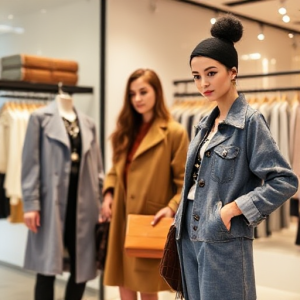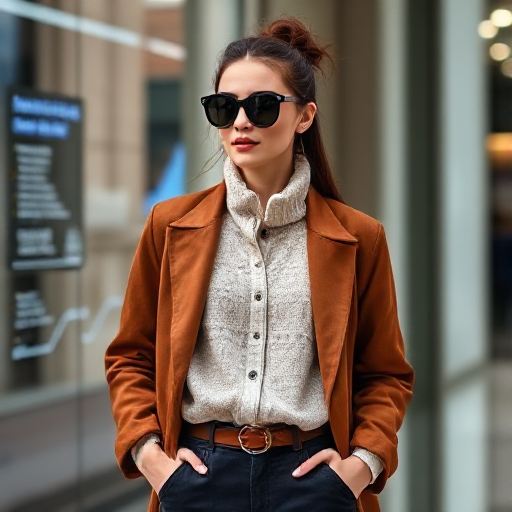
Attracting new customers is vital for business growth. Whether you’re a boutique owner, a fashion designer, or a global brand, it’s crucial to understand how to stand out in a competitive market and draw more customers to your brand. Here’s a comprehensive, informative, and educative article on how to get more fashion customers.
1. Understand Your Target Audience
Before diving into marketing strategies, it’s essential to know who your target audience is. The fashion industry is vast, with different customer segments based on age, gender, income, lifestyle, and style preferences. Here’s how to pinpoint your target:
- Demographics: Identify your customer’s age, gender, income level, location, and profession. Understanding these factors helps you tailor your product offerings and marketing messages effectively.
- Psychographics: Look beyond the surface. Understand your customer’s values, interests, and lifestyle. Are they eco-conscious, into streetwear, or prefer luxury fashion?
- Behavior: Study how your potential customers shop. Are they online shoppers, or do they prefer in-store experiences? What drives their buying decisions—price, quality, brand reputation, or exclusivity?
By having a deep understanding of your customers, you can create products and marketing campaigns that resonate with them and appeal directly to their preferences.
2. Optimize Your Online Presence
In today’s digital age, having an online presence is non-negotiable. If you’re not visible online, you’re missing out on a huge customer base. Here’s how to boost your online visibility:
- Build a User-Friendly Website: Your website should be easy to navigate and mobile-optimized. Ensure your product images are high quality, descriptions are clear, and the checkout process is simple and secure.
- Search Engine Optimization (SEO): SEO helps your website rank higher on search engines like Google. By incorporating relevant keywords related to your products, you can attract more organic traffic. Focus on both on-page SEO (e.g., optimizing product descriptions) and off-page SEO (e.g., building backlinks).
- Leverage Social Media: Social media platforms like Instagram, Facebook, TikTok, and Pinterest are perfect for fashion businesses. Create visually appealing content, post consistently, and engage with your followers. Social media helps build a community around your brand and fosters customer loyalty.
- Email Marketing: Collect customer emails and build a mailing list. Send out regular newsletters with exclusive offers, new arrivals, and fashion tips. Email marketing remains one of the highest converting forms of communication.
3. Offer Personalization
Personalization is one of the most effective ways to build a relationship with your customers. Personalized experiences make your customers feel valued and understood. Here’s how to implement personalization:
- Personalized Recommendations: Use data to recommend products based on a customer’s past purchases or browsing history. Tools like Shopify and other eCommerce platforms offer personalized recommendation features.
- Tailored Email Campaigns: Send personalized email campaigns that include products the customer has shown interest in or offer discounts on items they’ve left in their cart.
- Customizable Products: Offer custom fashion items, such as personalized clothing or accessories, allowing customers to make the item truly their own.
4. Utilize Influencers and Brand Ambassadors
Influencer marketing has become a cornerstone of fashion marketing. Collaborating with influencers and brand ambassadors can significantly boost your brand’s reach and credibility. Here’s how to make the most of influencers:
- Identify Relevant Influencers: Choose influencers whose followers align with your target demographic. They don’t have to have millions of followers, but they should have an engaged and relevant audience.
- Create Authentic Partnerships: Work with influencers to create authentic content, such as styling your products or sharing behind-the-scenes glimpses of your brand. Authenticity resonates with audiences more than sponsored ads.
- Micro-Influencers: Don’t overlook micro-influencers (those with 1k to 100k followers). They often have more engaged and loyal followers, and their endorsements can feel more genuine.
5. Host Events and Pop-Ups
Hosting events, whether virtual or in-person, can create buzz around your brand and provide an opportunity to connect with customers in a memorable way. Consider:
- Pop-Up Shops: Temporary retail spaces in high-traffic areas can increase brand exposure and create a sense of urgency.
- Fashion Shows and Trunk Shows: Organizing fashion shows or trunk shows helps showcase your products to a live audience, and these events can be great marketing opportunities.
- Collaborative Events: Partner with other businesses, like beauty brands or lifestyle influencers, to host co-branded events that attract a wider customer base.
6. Incorporate Sustainable Practices
In recent years, there has been a growing demand for sustainable and ethically produced fashion. Many consumers are more inclined to support brands that are socially responsible. Consider:
- Eco-Friendly Materials: Use sustainable materials like organic cotton, recycled fabrics, and vegan leather.
- Transparency: Be transparent about your supply chain and manufacturing processes. Customers are more likely to support brands that align with their ethical values.
- Upcycling and Recycling: Promote clothing recycling programs or create collections that emphasize upcycling, helping reduce waste in the fashion industry.
7. Offer Exceptional Customer Service
Customer service is often the make-or-break factor in gaining loyal customers. A great customer service experience can turn one-time buyers into repeat customers. Here’s how to ensure exceptional service:
- Easy Returns and Exchanges: Make the return and exchange process seamless and hassle-free. This increases trust and reduces the barrier to purchase.
- Fast Response Time: Ensure your customer service team is responsive to inquiries, whether via email, phone, or social media. Quick responses create a positive experience for customers.
- Loyalty Programs: Reward repeat customers with loyalty points, exclusive discounts, or early access to new collections. This encourages customers to return for future purchases.
8. Collaborate with Other Fashion Brands
Partnering with other brands can help you access a new audience and build stronger brand associations. Consider these collaboration strategies:
- Co-Branding: Work with other fashion brands or designers to create limited-edition products that leverage both brands’ reputations.
- Bundle Offers: Partner with complementary brands to create bundle offers that provide value to customers, such as combining fashion with beauty products or accessories.
- Guest Features: Allow other designers or influencers to feature their collections on your platform. This fosters a sense of community and brings in new customers who follow these collaborators.
9. Run Targeted Ads and Promotions
Paid advertising remains one of the most effective ways to acquire customers. Platforms like Instagram, Facebook, and Google Ads allow you to target specific demographics and interests. Here are some tips:
- Create Eye-Catching Ads: Make sure your ads are visually appealing and highlight the unique features of your fashion products.
- Use Retargeting: Retarget visitors who have interacted with your website or social media profiles but haven’t yet made a purchase. Offering them a discount or showcasing products they viewed can encourage conversions.
- Seasonal Discounts and Flash Sales: Run promotions tied to holidays or special events. Flash sales create a sense of urgency, prompting customers to make a quick decision.
10. Collect and Use Customer Feedback
Lastly, actively collecting and using customer feedback can help you improve your offerings and build customer loyalty. Regularly solicit feedback through surveys, reviews, or social media polls to learn what your customers like and what they want to see more of.
By acting on this feedback, you not only improve your products and services but also show your customers that you value their input, which can foster a deeper sense of connection to your brand.
Getting more fashion customers requires a mix of creative marketing, personalized experiences, and excellent customer service. By understanding your target audience, optimizing your online presence, offering personalized recommendations, and leveraging the power of influencers and collaborations, you can grow your customer base. Combine this with sustainability, events, and exceptional customer service, and you’ll be well on your way to building a loyal and engaged customer community.
The fashion industry is fast-paced, but with the right strategies and consistent effort, your brand can carve out a unique space and attract a steady stream of customers.
